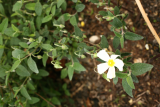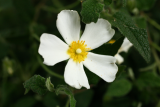Additional notes (click to expand)
Medicinal
C. salviifolius is traditionally used as a tea substitute, ointment, or as a cicatrizing or astringent agent. The antibacterial activity of C. salviifolius is not only related to its essential oils or terpenes (Gertsch, 2011; Güvenç et al., 2005; Morales-Soto et al., 2015) but also to its polyphenolic compounds.
https://www.sciencedirect.com https://www.sciencedirect.com/topics/agricultural-and-biological-sciences/cistus-salviifolius#:~:text=Usai%2C%202017).-,C.,also%20to%20its%20polyphenolic%20compounds.
Geographical distribution
- Africa, Northern Africa, Algeria
- Africa, Northern Africa, Libya
- Africa, Northern Africa, Morocco
- Africa, Northern Africa, Tunisia
- Asia-Temperate, Western Asia, Turkey
- Europe, Southeastern Europe, Albania
- Europe, Southeastern Europe, Bulgaria
- Europe, Southeastern Europe, Greece
- Europe, Southeastern Europe, Italy
- Europe, Southwestern Europe, France
- Europe, Southwestern Europe, Portugal
- Europe, Southwestern Europe, Spain
Cistus salviifolius L.
Family: CISTACEAEGenus: Cistus
Species: salviifolius L.
Common names: Sage leaf rock rose
Distribution summary: S.Europe
Habit: Shrub
Hardiness: H3 - Half hardy; unheated greenhouse/mild winter
Habitat: Woods, thickets, banks
Garden status: Currently grown
Garden location: Plants of the World (C), Olive tree bed (O)
Flowering months: June
Reason for growing: Medicinal
.JPG)




.JPG)
.JPG)